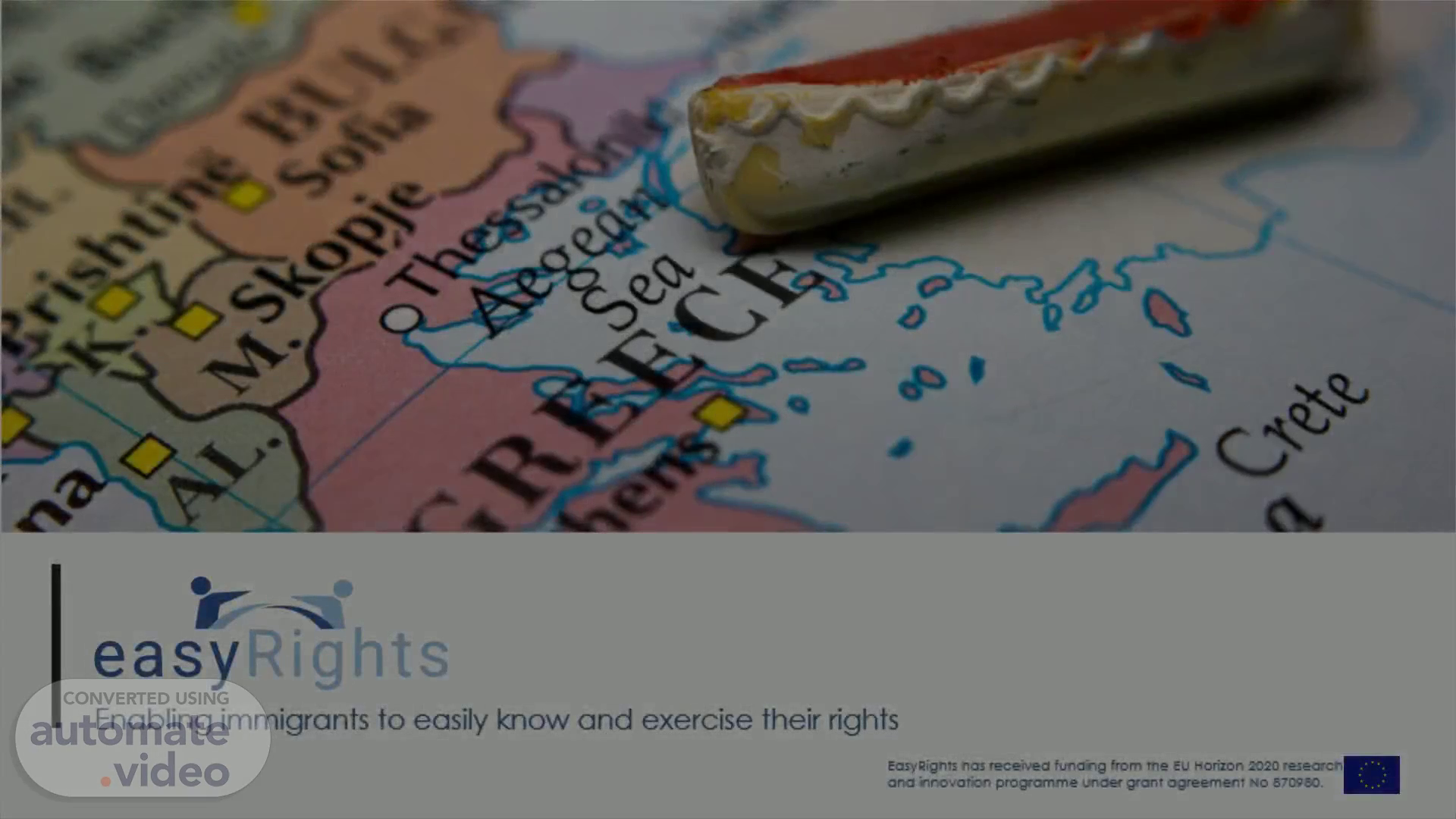
PowerPoint Presentation
Scene 1 (0s)
Enabling immigrants to easily know and exercise their rights.
Scene 2 (14s)
that´s a good question, I would rather suggest to focus on the first version also because in any case the video should be extremely general for communication to the general public but no, not about how the ontology evolved what is its rationale, its purpose etc starting like with a question how to map (or follow) the different laws, regulations and offices in every country? and then bla bla that´s how Laura suggests to start.
Scene 3 (35s)
Ontology Tree. 3. How to map (or follow) the different laws, regulations and offices in every country?.
Scene 4 (50s)
Task 1.1. Task 1.1 of the project delivers a common ontology that supports the framing of the legal and institutional borders of the immigration issue.
Scene 5 (1m 11s)
The ontology represents a database with extensive information and sources that can be used within the project and continuously supplemented. The ontology is also a possibility to: share information and make it accessible to the project partners and to achieve a common level of knowledge. The ontology serves as an orientation and basis for further tasks, such as the easyRights Mediation Grammar and the AI work.
Scene 6 (1m 45s)
Structure of the easyRights ontology. The structure of the easyRights ontology is divided into 4 classes: 1. Institutions: EU/governmental and non-governmental This class includes the main institutions on EU and national level being involved in legal matters and implementation. Furthermore the ontology offers a comprehensive overview of governmental and non-governmental institutions operating the field of immigration. 2. Regulations and laws: Anti-discrimination/Asylum/Foreigners/Integration/Nationality Under Regulations and laws the concrete legal framework and legislation relevant to immigration is dealt with. 3. Residence Status: Regular & Irregular migration Residence status includes an overview of different visas and residence permits on EU and national level divided into three further sub-classes: short-term residency/ long-term residency and no residence permit. That part is further related to different services (class services and benefits) that are accessible for holders of the respective residence permit or even without any residence permit. 4. Services and benefits: Education and language/ Employment and training/ Healthcare/ Housing & Reception The class Services and benefits includes information on services and benefits in the fields of Education and language/ Employment and training/ Healthcare/ Housing & Reception..
Scene 7 (2m 34s)
Institutions: EU/governmental and non-governmental.
Scene 8 (2m 57s)
Triple Loop Learning & Learning Drivers. Source: Concilio , Grazia, Maryam Karimi, and Lydia Rössl. 2021. ‘Complex Projects and Transition-Driven Evaluation: The Case of the EasyRights European Project’. Sustainability 13 (4): 2343. https://doi.org/10.3390/su13042343 based on Debategraph : See https://debategraph.org/Details.aspx?nid=250157 . Accessed on 15 April 2022.
Scene 9 (3m 20s)
The easyRights evaluation tool box. co-creation approach as basement for the development of the tool box collaborative teams that contribute the relevant expertise and experience support of learning and feedback process internally and across ecosystems varying combinations of evaluation tools (mixed-methods approach) associated with one or more learning drivers related to different work packages.
Scene 10 (3m 37s)
Evaluation as a shared learning activity. The creation of l earning spaces supports: A common understanding of project activities and objectives. The development of a shared project vision. The collaborative identification of and work on challenges and solution strategies throughout the project. The understanding, engagement, and transformation of real contexts toward transition..